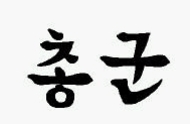Taekwondo Colour Belt Patterns
Patterns are various fundamental movements, most of which represent either attack or defence techniques, set to a fixed logical sequence. In patterns the student systematically deals with several imaginary opponents under various assumptions using every available attacking and blocking tool from different directions. Thus pattern practice enables the student to go through many fundamental movements in series to develop sparring techniques, improve flexibility of movements, master body shifting and gain rhythmical movements. In short patterns can be compared with a unit tactic or a word if fundamental movement is an individual soldier's training or alphabet. Accordingly pattern the ledger of every movement, is a series of sparring, power tests, feats and characteristic beauty. Though sparring may merely indicate that an opponent is more or less advances, patterns are a more critical barometer in evaluating an individual's technique.
The following points should be considered when performing patterns
1. Patterns should begin and end in the same spot.
2. Correct posture and facing must be maintained at all times.
3. Muscles of the body should be tensed or relaxed at the proper critical moments in the exercise.
4. The exercise should be performed in a rhythmic movement with the absence of stiffness.
5. Each pattern should be accelerated or decelerated according to instructions.
6. Each pattern should be perfected before moving on to the next.
7. Students should know the purpose of each movement.
8. Students should perform each movement with realism.
Chon Ji Tul
Chon Ji consists of 19 movements
Chon Chi literally means Heaven and Earth, it is in the orient interpreted as the creation of the world or the beginning of the human history and therefore it is the initial pattern practiced by the beginner. This pattern consists of two similar parts, one to represent Heaven and the other Earth.

To see the Korean and English translation for the movements of Con Ji Tul, please click here

Dan Gun Tul
Dan Gun Tul consists of 21 movements.
Dan Gun is named after the holy Dan Gun, the legendary founder of Korea in the year 2333 B.C.

Do San Tul
Do San Tul consists of 24 movements.
Do San is the pseudonym of the patriot Ahn Ch'ang Ho (1876 - 1938), he devoted his entire life to furthering the education of Korea and it's independence movement.

Won Hyo Tul
Won Hyo consists of 28 movements.
Won Hyo was the noted monk who introduced Buddhism to the Sill Dynasty in the year 686 A.D.

Yul Gok Tul
Yul Gok consists of 38 movements.
Yul Gok is the pseudonym of the great philosopher and scholar Yi I (1536 - 1584) nicknamed "Confucius of Korea". The 38 movements of this pattern refer to his birthplace on 38 degrees latitude and the diagram represents scholar.

Joong Gun Tul
Joong Gun Tol consists of 32 movements.
Joong Gun is named after the patriot Ahn Joong Gun who assassinated Hiro Bumi Ito, the first Japanese governor-general of Korea, known as the man who paid the leading part in the Korea - Japan merger. There are 32 movements in this pattern to represent My Ahn's age when he was executed at Lui Shung Prison (1910).

Toi Gye Tul
Toi Gye consists to 37 movements.
Toi Gye is the pen name of the noted scholar Yi Hwang (16th century), an authority on neo-Confucianism, the 37 movements of the pattern refer to his birthplace on 37 degrees latitude and the diagram represents scholar.

Hwa Rang Tul
Hwa Rang consists of 29 movements.
Hwa Rang is named after the Hwa Rang youth group which originated in the Silla Dynasty in the early 7th century. the 29 movements refer the 29th Infantry Division, where Taekwondo developed into maturity.

Choong Moo Tul
Chung Moo consists of 30 movements.
Chung Moo was the given name to the great Admiral Yi Soon Sin of the Yi Dynasty. He was reputed to have invented the first armoured battle ship (Kobukson) in 1592, which is said to be the precursor of the present day submarine. The reason why this pattern ends with the left hand attack is to symbolise his regrettable death, having no chance to show his unrestrained potentiality checked by the forced reservation of his loyalty to the King.
























